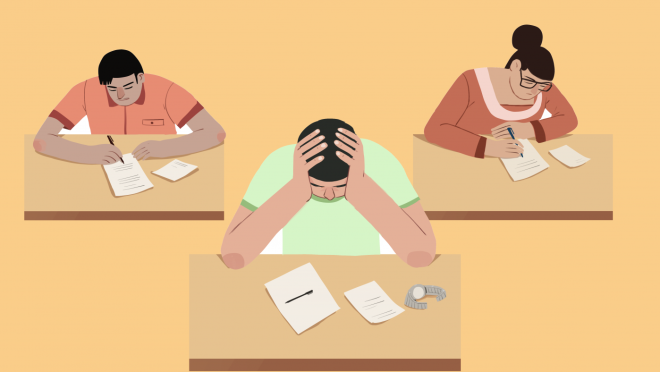Inside the 13 hour exam: The Suneung challenge of South Korea
Inside the 13 hour exam: The Suneung challenge of South Korea

Every November, South Korea enters one of the most intense days of the year. The entire country slows down for the Suneung, the national university entrance exam that shapes education, employment and even social prospects. Flights are rescheduled, shops stay closed for the morning and families wait quietly outside school gates hoping for the best.By early evening, most students have completed the exam and walk out relieved. Yet lights remain on in some classrooms long after the sun has set. Inside, a small group of blind students continues working through the longest version of the test, sometimes close to 13 hours without a break for dinner.
More than 550,000 candidates will sit this year’s Suneung. It is the largest turnout in seven years. The exam covers Korean, mathematics, English, social or natural sciences, an additional foreign language and Hanja. For sighted students, the day lasts about eight hours. For blind students with severe visual impairments, the time is extended to 1.7 times the standard length, which pushes the finish to nearly 22:00.The extension is not only due to accessibility needs but also the physical nature of the braille papers. Once converted into braille, each test booklet becomes several times thicker. What appears as a short section in print becomes a heavy bundle of pages in braille.At Seoul Hanbit School for the Blind, 18-year-old Han Donghyun is preparing to take the full extended version. According to official data, 111 blind students took the exam last year. Dong-hyun is among those with the most severe level of impairment; he was born completely blind.
On 7 November, Dong-hyun was studying with a braille copy of past exam papers, moving rapidly across the dots as he revised. With only days left before the test, he said his main concern was maintaining enough stamina to last through the entire day. He will rely on braille papers and screen-reading software in the exam room.He explained that the Korean language section is especially demanding. A booklet that would normally be around 16 printed pages expands to roughly 100 pages in braille. Information from audio software cannot be revisited, so he must keep long passages in mind while searching for the right answers. Mathematics presents a different challenge; graphs and tables that sighted students view at a glance must be interpreted through touch.
Even so, he acknowledged that conditions have improved over time. Before 2016, blind students were expected to work out many calculations mentally. Today they can use a braille notetaking device called a Hansone to follow numerical steps more easily.
Another Hanbit student, 18-year-old Oh Jeong-won, described late afternoon as the most difficult part of the day. After hours of reading, listening and solving problems, fatigue becomes overwhelming. The lack of a dinner break makes the experience even more draining. He said he pushes through because finishing the exam carries a strong sense of achievement.
Jeong-won added that trying to absorb information through both touch and hearing requires intense concentration. The mental effort is far greater than many people realise.Yet both students say the biggest barrier is not the length of the exam. It is the shortage of accessible study materials throughout the year. Textbooks used by sighted students are rarely available in braille. Many online lessons rely on diagrams and visuals that cannot be interpreted through audio alone. Some materials have to be manually typed to make them usable.
One of the most serious issues is the delay in receiving braille versions of the government-produced EBS preparation books. These materials are closely aligned with the national exam. Sighted students usually receive them early in the year, but blind students often wait until late August or September. Dong-hyun said his braille files arrived less than three months before the exam.
The National Institute of Special Education, which prepares the braille versions, told the BBC that each book requires at least three months to complete due to formatting rules. The institute said it is trying to reduce disruptions by releasing the materials in parts rather than waiting for full completion. The Korean Blind Union has raised concerns repeatedly and now plans to submit a constitutional petition demanding equal access to all textbooks. These findings were gathered as part of a BBC investigation, and the final section of the report forms a BBC exclusive on the experiences of blind students taking the Suneung.
For the students at Hanbit School, the exam represents more than a university entrance requirement. It is the culmination of years of effort. Jeong-won described the entire experience as a lesson in perseverance. Their teacher, Kang Seok-ju, said the determination shown by blind students is remarkable. Hours of tracing raised dots causes soreness in their fingertips, yet they refuse to slow down.
Mr Kang encourages his students to judge the exam by their effort rather than their score. He reminds them that it reflects all the learning they have done since childhood, but it does not dictate their entire future.


